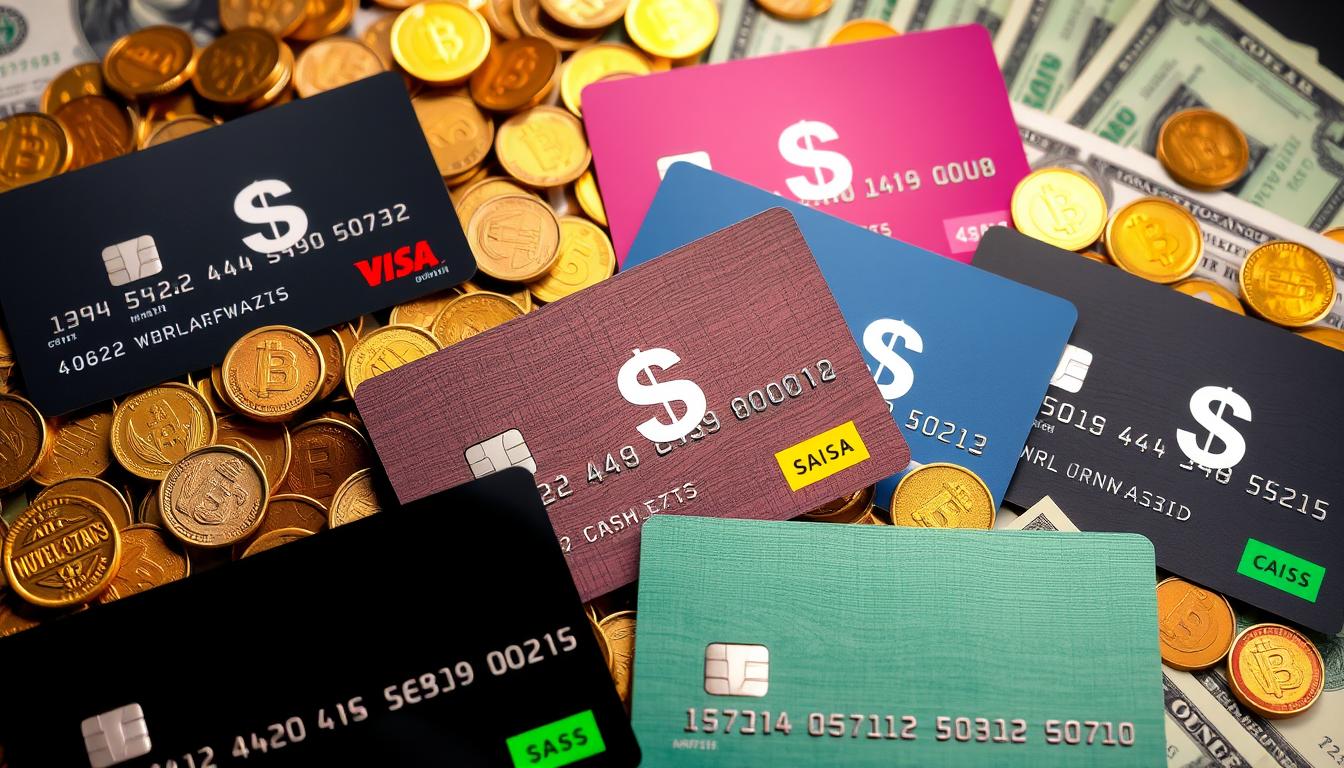The concepts of supply and demand are key to understanding market dynamics. They show how goods’ availability and consumer desire interact. This interaction helps shape economic equilibrium.

GBTI Visa Gold Card
It influences both what people buy and the nation’s economic policies. Knowing how prices are set is vital for understanding the economy.

Anúncios
What is Supply and Demand?
Understanding supply and demand is key to learning about economics. They help decide the prices and quantities of what we buy and sell. Knowing what they mean is crucial to understanding how markets work.
Anúncios
Definition of Supply
Supply is about how much of a product sellers want to sell at different prices. When prices go up, sellers often want to sell more to earn more money. The amount they’re willing to sell can change for many reasons, like how much it costs to make something or changes in the market.
Definition of Demand
Demand shows how much of a product buyers want to buy at different prices. Usually, if something gets more expensive, people want to buy less of it. This opposite link between price and demand is key to understanding how we decide to buy things and how markets move.

Understanding the Law of Supply and Demand
The law of supply and demand is key in how economies work. It shows why prices change when supply and demand shift. If people want more of something but its amount doesn’t grow, prices go up. On the other hand, if we have more of an item than people want, prices fall. This helps us understand how prices in the market change.
Supply and demand balance each other at the market equilibrium. Here, the amount of goods people want matches what’s available. This keeps prices stable. A change in supply or demand can cause prices to move. This affects what consumers buy and what stores stock.
How Supply and Demand Work in the Marketplace
Supply and demand drive market functions. The price mechanism is key. It sets prices by balancing supply and demand. Knowing this helps us understand market balance. This balance shapes what we buy and what is made.
Price Mechanism
Prices are controlled by supply and demand. This system decides pricing in the market. When prices go up or down, makers adjust what they produce. High prices mean more is made. Low prices cut production. This shows how vital prices are in using resources well.
Market Equilibrium
Market balance is when supply equals demand. This happens when supply and demand curves meet. There are no extra goods or shortages. Prices help reach this balance. If demand is higher than supply, prices go up. This attracts more makers, finding a new balance.
The Law of Demand
The law of demand shows a basic rule in economics. It says as prices go up, people want less. This idea points out how we decide what to buy when we can’t have everything.
Knowing this helps us figure out market trends.
Inverse Relationship with Price
People change what they buy when prices change. If prices go up, they buy less because there’s not enough to go around.
Like, if a basic food gets pricier, folks might eat it less or pick cheaper foods. This shows how the law of demand works in real life.
Exceptions to the Law of Demand
But, the law of demand doesn’t always apply. Sometimes, different factors change expected behavior.
- Giffen Goods: These are basic items that see more demand as they get pricier, due to people not affording better options.
- Veblen Goods: Fancy products may be more wanted when their prices hike, as higher costs can seem cooler.
Looking into these exceptions helps us understand market behaviors better. It also questions the usual ideas of how price affects buying.
The Law of Supply
The law of supply states a simple economic rule: when prices go up, producers want to sell more. This happens because suppliers aim to make as much profit as they can. If prices are high, the income from selling more goods can cover the higher production costs.
One key thing affecting this law is price elasticity. It’s about how much the amount supplied changes when prices do. If supply is very elastic, a small price jump causes a big increase in what’s supplied. This means companies in a strong supply chain can quickly meet changes in what customers want.
Knowing how the law of supply and price elasticity work together helps us see how the market operates. It shows why knowing about competitors and how much you can make matters. By understanding these things, producers can make plans that meet market needs. This helps them stay ahead in a competitive world.
Price Elasticity in Supply and Demand
Price elasticity shows how supply and demand react to price changes. It helps businesses and economists guess how the market will respond. Elasticity tells us how the amount people want or offer changes with price shifts.
Understanding Elasticity
When demand is elastic, people buy a lot less if prices go up a little. Luxury items, for example, can lose many sales even with small price hikes. On the other hand, inelastic demand is when people keep buying essentials, like medicine, even if prices go up. Knowing this helps make better pricing plans and predict what buyers might do.
Factors Affecting Price Elasticity
Several things impact price elasticity, including:
- Availability of substitutes: If other options exist, people are more likely to switch.
- Proportion of income spent: Items that take up more of your budget tend to be more sensitive to price changes.
- Consumer preferences: What people like or dislike can also affect elasticity.
These factors together play a big part in understanding how flexible supply and demand can be. They are key for making economic choices.
Factors Affecting Supply and Demand
Understanding supply and demand dynamics means looking at key factors affecting the market. Production costs and what consumers like play big roles. They shape the availability and desire for various goods and services.
Production Costs and Supply
Production costs are crucial in determining supply. Labor expenses, raw material costs, and overhead immensely impact supply levels. If production costs go up, supply often goes down. Producers might find it not as profitable to keep making goods at high costs.
This drop in supply can lead to shortages. These shortages can make products harder to find and might even raise prices.
Consumer Preferences and Demand
What consumers prefer greatly affects demand. As people’s tastes and societal values shift, demand can change a lot. For example, more people wanting organic foods and wellness products because of health concerns changes demand.
It’s key for businesses to understand these consumer preferences. This helps them adjust to changes in the market quickly.
Shifts in Supply and Demand Curves
Changes in supply and demand curves are key in understanding markets. They’re influenced not just by price changes. Knowing these shifts helps people make better decisions in the marketplace.
Reasons for Shifts
Different factors can cause shifts in these curves. Here are some common ones:
- Population Growth: A growing population increases demand for goods and services. This pushes the demand curve right.
- Rising Incomes: Higher incomes lead to more spending on various products. This moves the demand curve outward.
- Technological Advancements: New production methods can lower costs. This results in a supply curve shift to the right.
- Changes in Production Costs: Changes in raw materials or labor costs can affect supply. This influences the supply curve.
- Consumer Preferences: Changes in what people want to buy cause big shifts in demand curves.
Understanding Market Equilibrium
Market equilibrium happens when the number of goods made and demanded by buyers at a certain price matches. This balance makes sure there is no extra or missing goods, which keeps the market stable. At a point where supply and demand curves meet, an equilibrium price is set. It shows what consumers like and what can be made.
Determining Equilibrium Price
Finding the equilibrium price helps keep supply and demand in balance. Analysts look at where the supply and demand curves cross. This is the price where buyers want to buy exactly what sellers want to sell.
- The supply curve shows the amount of goods suppliers want to make at different prices.
- The demand curve shows how much buyers want to buy at various prices.
- At the crossing point, suppliers and buyers agree on the price and amount.
Knowing about market equilibrium lets businesses and policymakers guess changes in the market. If supply or demand changes, the equilibrium price might shift too. This could lead to new ways of setting prices, making goods, and selling them.
Real-World Examples of Supply and Demand
Real-world examples show how supply and demand affect markets. A key event happened during the COVID-19 pandemic. Travel limits were set, and not many people needed gasoline. This led to too much supply and made fuel prices fall quickly. These economic examples show how quickly demand changes can affect prices.
Another interesting case is the shift towards plant-based foods. As people became more health-conscious, the demand for these foods went up. Companies started charging more for these products. This shows how consumer tastes can change markets and affect supply chains.
Impact of Government Policies on Supply and Demand
Government policies are key to shaping supply and demand in the market. They can change the balance, impacting both producers and consumers. For instance, subsidies make it cheaper to produce goods. This increases supply and brings more products to buyers.
Taxation can make things more expensive for buyers. This usually cuts down how much people want to buy, especially for unhealthy items like tobacco and sugary drinks. It’s important for policymakers to understand these effects. They need to balance controlling consumption with supporting economic growth.
New rules can also shake up the market, affecting prices and how much people trust the economy. By keeping an eye on these changes, businesses can stay ahead. This helps them remain strong competitors in a fast-moving world.
Importance of Supply and Demand in Economics
The concepts of supply and demand are key to understanding economics. They help businesses and economists analyze how markets work. Knowing about these two factors helps in making smart choices about prices and investments.
These concepts shed light on why things cost what they do. They show us how the market reacts to what people want. By watching changes in supply and demand, companies can predict trends. This lets them adjust their plans to do better in the future.
Conclusion
Understanding supply and demand is key in economics. These forces shape market activities, affecting prices and how people buy things. Knowing the market helps consumers choose wisely and businesses adjust their plans.
Exploring supply and demand gives us useful market insights. By noticing changes in these areas, people and companies can adapt quickly. This understanding influences personal choices and bigger economic trends, showing how markets interact.
So, learning about supply and demand is vital for navigating the economy. It gives us the tools to analyze market changes and make smart decisions. This knowledge helps in aligning with changing customer needs and production abilities.
FAQ
What is the definition of supply?
How is demand defined in economic terms?
What does the law of supply state?
Can you explain the law of demand?
What is market equilibrium?
What is the price mechanism?
What factors lead to shifts in supply and demand curves?
How do government policies influence supply and demand?
What is price elasticity in supply and demand?
Can you provide real-world examples of supply and demand at work?
Conteúdo criado com auxílio de Inteligência Artificial


